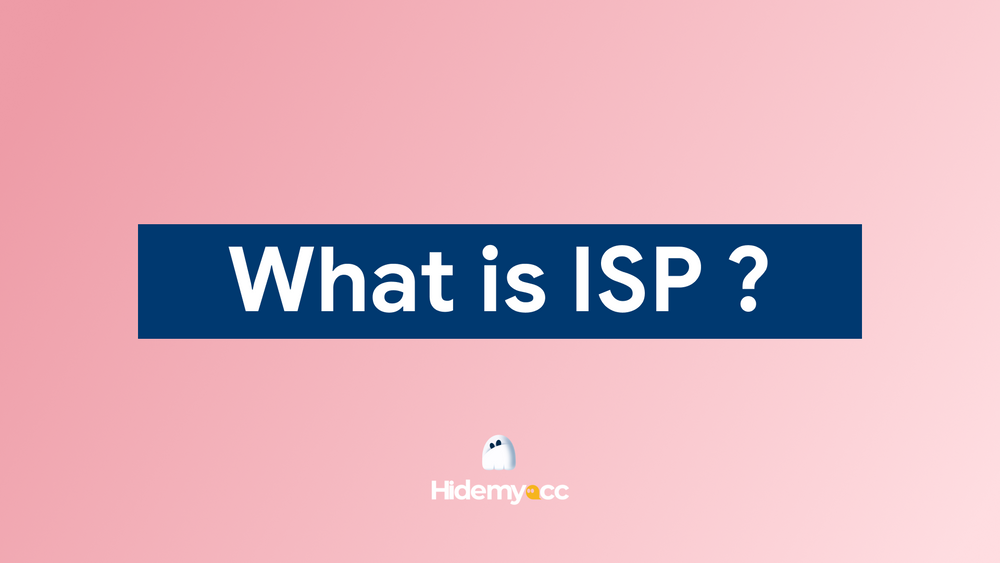For those familiar with IT and technology, IP is a common term. However, not everyone understands the structure of an IP address or the types commonly used. Here’s an informative overview from Antidetect Browser Hidemyacc.
1. What is an IP address?
An IP (Internet Protocol) address is an identifier for devices connected to the internet, like phones, PCs, laptops, etc. Each device has a unique IP address, ensuring no two are identical.
2. Structure of an IP Address
An IP address is a 32-bit binary range divided into four 8-bit groups, known as octets. These octets include a netid to identify the network and a host ID for individual devices within the network. IP addresses are usually written as four decimal numbers separated by dots.
2.1. Subnet mask
A subnet mask differentiates the netid from the host ID. Each Subnet mask has an IP address and has the same structure as an IP address.
The subnet mask consists of bits 1 and bits 0. As many bits as the subnet mask has, there are as many corresponding netids in the IP address.
IP addresses belonging to different networks can use different subnet masks. Therefore, we just need to get the ID AND and the corresponding subnet mask to determine which network the IP address belongs to.
2.2. IP address classes
IP addresses are made up of a set of 4 numbers, each number is separated by a period and divided into the following 5 classes:
Class A
The class A IP address structure includes the first Octets with values from 1 to 126. Class A is often used for private organizations around the world. Therefore, it will start from 1.0.0.1 to 126.0.0.0.
Class B
The address structure of IP class B includes the first octets with values from 128 to 191. Class B is often used for mid-range organizations. Thus, class B has addresses starting from 128.1.0.0 to 191.254.0.0/
Class C
The address structure of IP class C includes the first Octets with values from 192 to 223. Class C is often used for small organizations, possibly personal computers. Class C addresses start from 192.0.1.0 to 223.255.254.0.
Class D
Class D address structure includes the first Octets with values from 224 to 239. Class D has the first 4 bits always 1110, often used to release information. Class D has IP addresses starting from 224.0.0.0 to 239.255.255.255.
Class E
The class E address structure includes the first octets with values from 240 to 255. Class E has the first 4 bits always 1111, often used for research. Class E IP addresses start from 240.0.0.0 to 254.255.255.255.
3. Common Types of IP Addresses
IP addresses are classified for use with different methods. Here are some common IP types:
- Public IP address: is a type of public IP address that allows all devices to connect to the Internet. This type is often provided by ISP service providers, and usually does not change the address.
- Private IP Address: is a type of private address used to distinguish devices on a LAN. An IP can only be used by one device, so the Router will help distinguish the address for the device.
- Static IP Address: is a type of address with a fixed configuration that does not change over time. It is used for devices or servers that need a fixed address. Static IP allows users to remotely control the Internet and contains information about the device.
- Dynamic IP Address: It is a dynamic address type so the IP address changes over time. In addition, it is also automatically broadcast by the DHCP server, often used for local or personal devices to the Internet.
>>> Learn More: Step-by-Step Guide to Connecting Data Across Two Devices
4. Types of IP Addressing Based on Transmission Method
IP address structure divided into 3 different types depending on data transmission formulas.
4.1. IP Unicast
This is the address of a device, used in one-to-one transmission applications between two devices. IP Unicast is commonly used because it can send and receive data. This type is built-in for IPv4 and IPv6.
4.2. IP Multicast
IP Multicast is widely used in one-to-many transmission applications, meaning one device sends to many different devices. The message will be sent to the group address.
Routers forward copies of packets whose host ports have registered addresses. Only the server that needs to receive the message will have the information, the rest will be deleted by the LAN.
4.3. IP Broadcast
IP Broadcast is used when one device sends information to all devices in the same broadcast area. The IP address will have the host bits.
>>> Learn More: IPv4 address Explained: Everything You Need to Know
5. How to Check an IP Address?
A computer needs to be identified by its internal IP address and public IP address. Here are some ways to check IP addresses:
5.1. How to check internal IP address
Method 1:
-
Step 1: Open Control Panel on Start Menu.
-
Step 2: Access View network status and tasks.
-
Step 3: Click on the network currently in use, click Details.
-
Step 4: Note the IPv4 Address because this is the internal address in the system.
Method 2:
-
Step 1: Select the combination W + R to open Run. Enter CMD.
-
Step 2: Enter the command “ipconfig” to look up the IP. Note the IPv4 Address line.
5.2. How to check Public IP address
Currently, there are many software to help you check IP address structure Public effectively and quickly. You can visit the website https://www.whatismyip.com/ or https://ipfighter.com/ to look up. Besides, the system also tells you where you are on the map as well as who the supplier is?
6. How to hide IP address with Proxy
Proxies are known as intermediary servers that help users hide their real IP addresses. When making money online, you can use Proxies to support creating and managing multiple accounts is a popular and effective method.
If you need to change your IP address to increase security and access blocked websites, you can use Proxy Server in combination with Antidetect Browser Hidemyacc. With the support of Hidemyacc, you can access and manage many different accounts. Antidetect Browser Hidemyacc will allow you to change parameters such as IP address, browser, OS, screen resolution, device memory,... and more than 15 other parameters to avoid being detected by the website.
Hopefully the above article helps you understand better IP address structure as well as common types of IP addresses. Additionally, with Hidemyacc's support, changing IP addresses and managing multiple accounts is easier than ever. Hidemyacc allows users to use utilities for FREE within 7 days to improve customer experience. Please contact us for the fastest advice and support.
You May Also Like:






